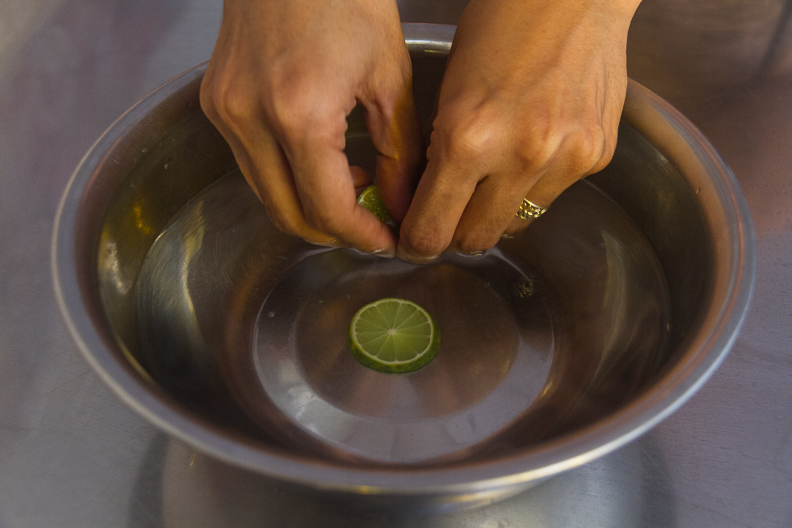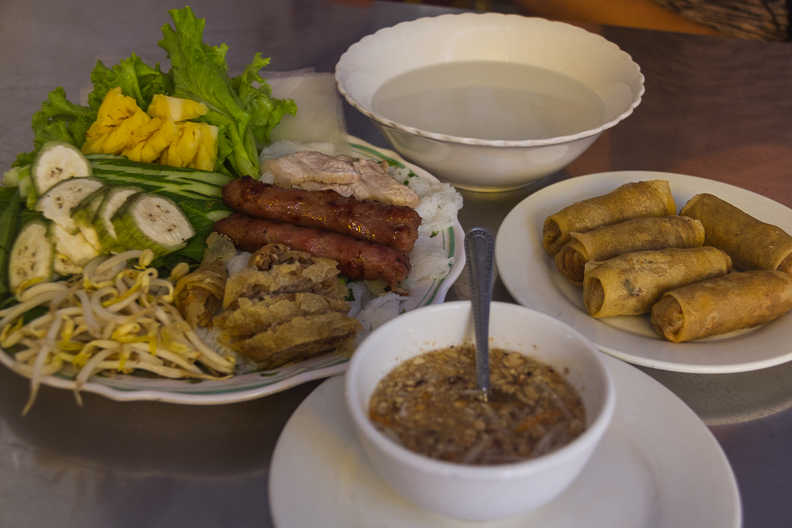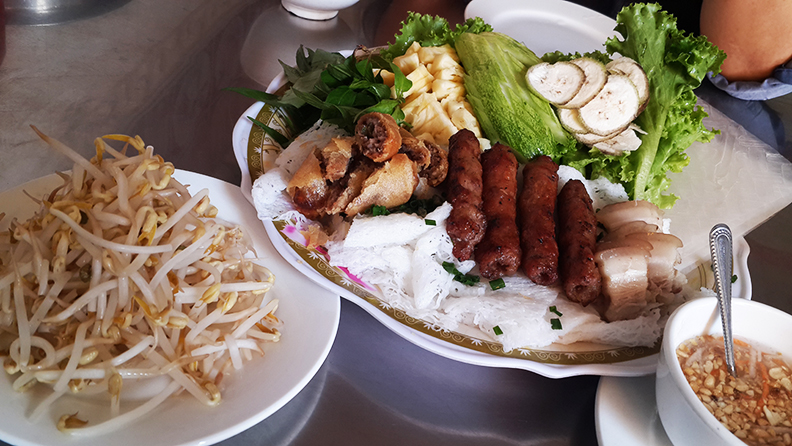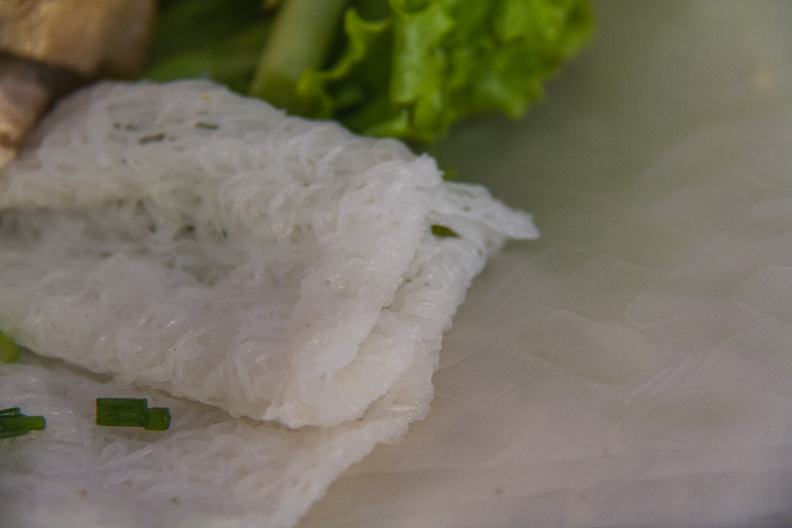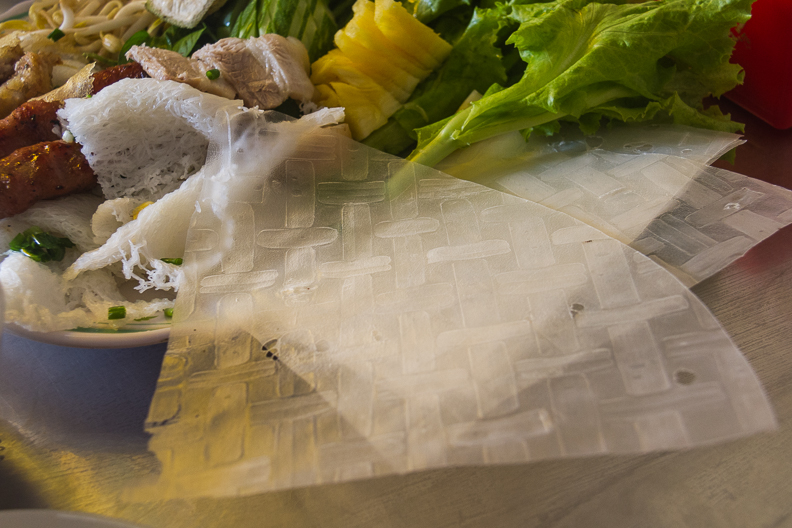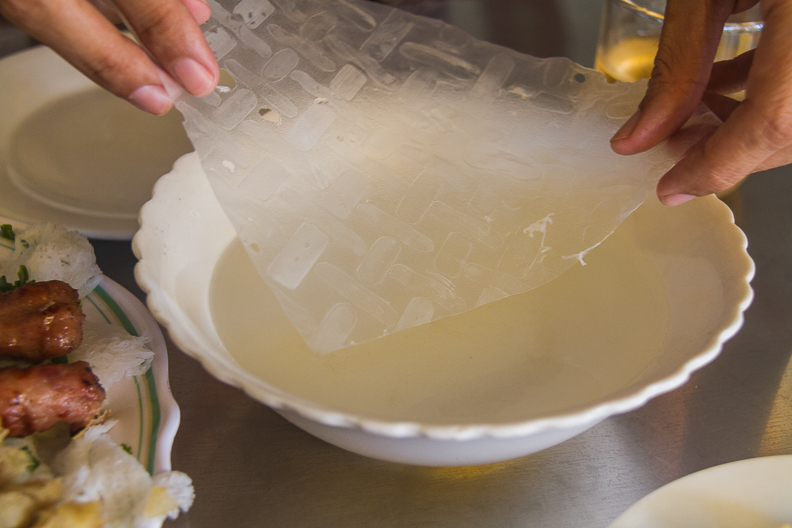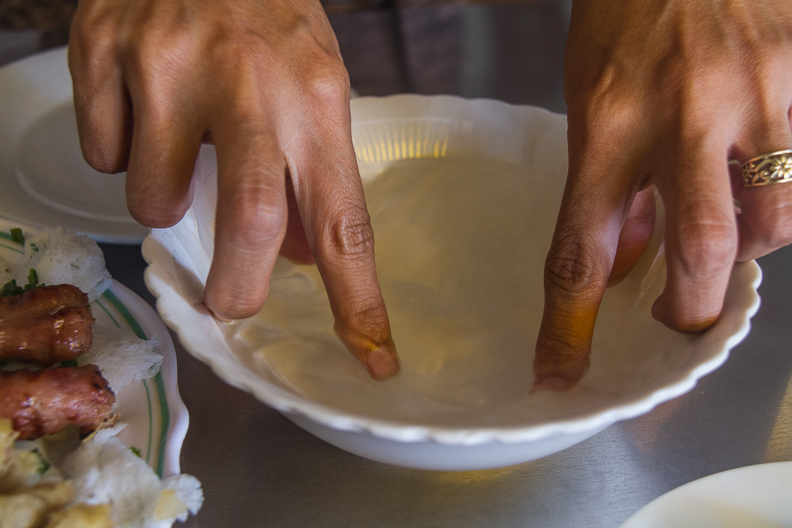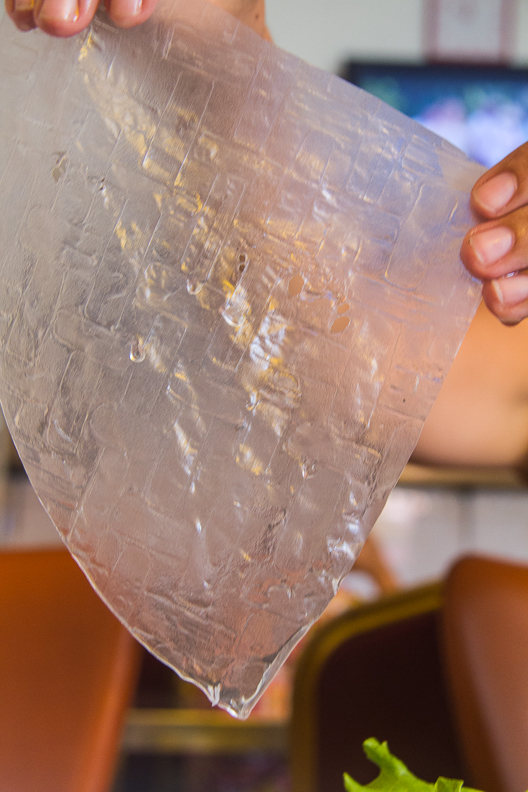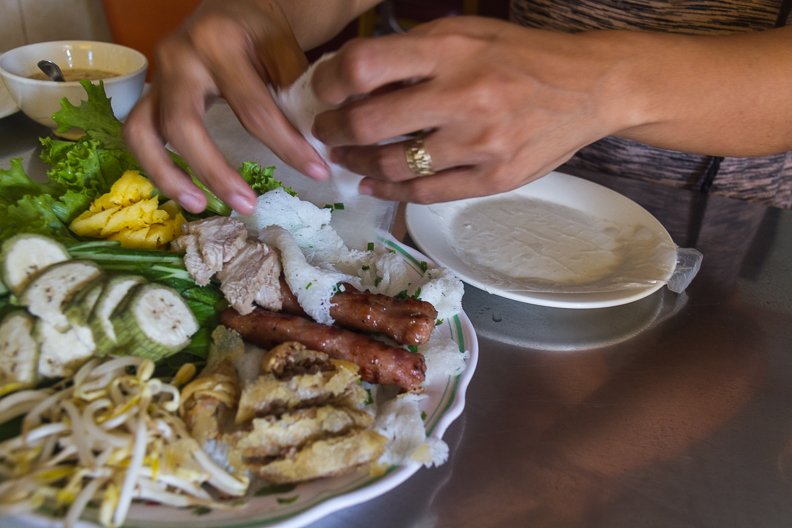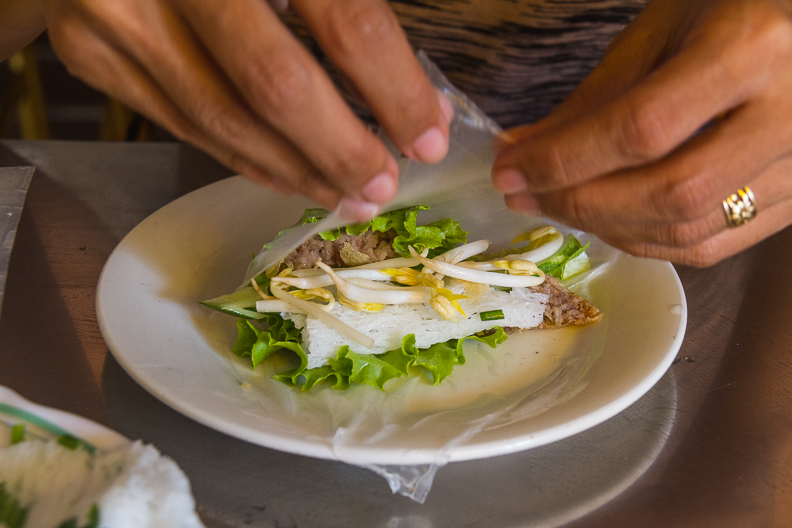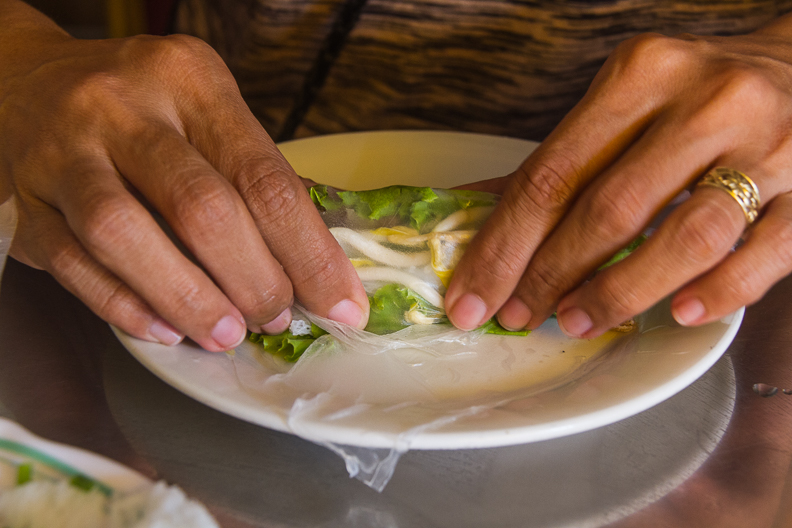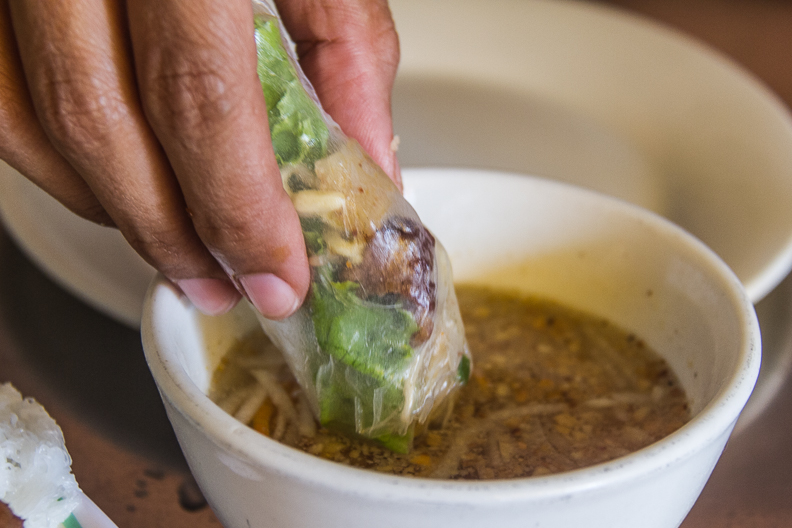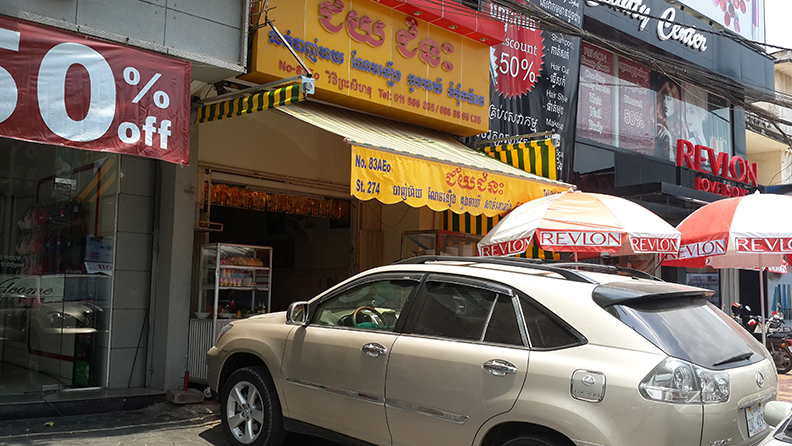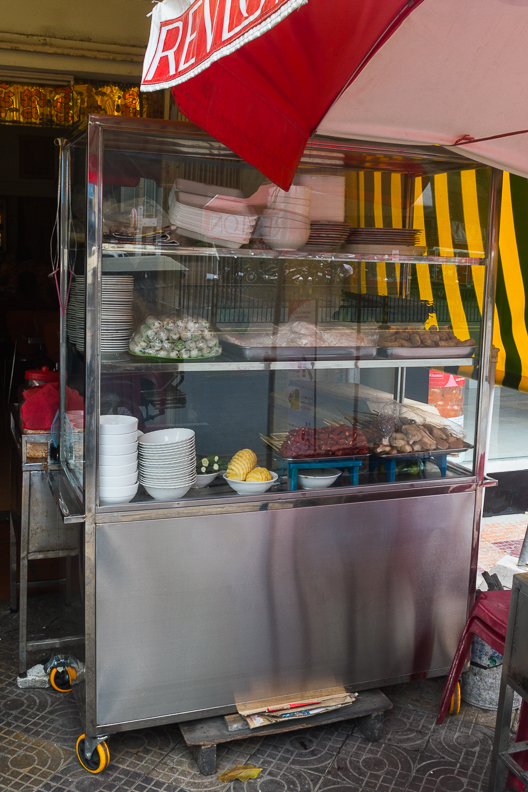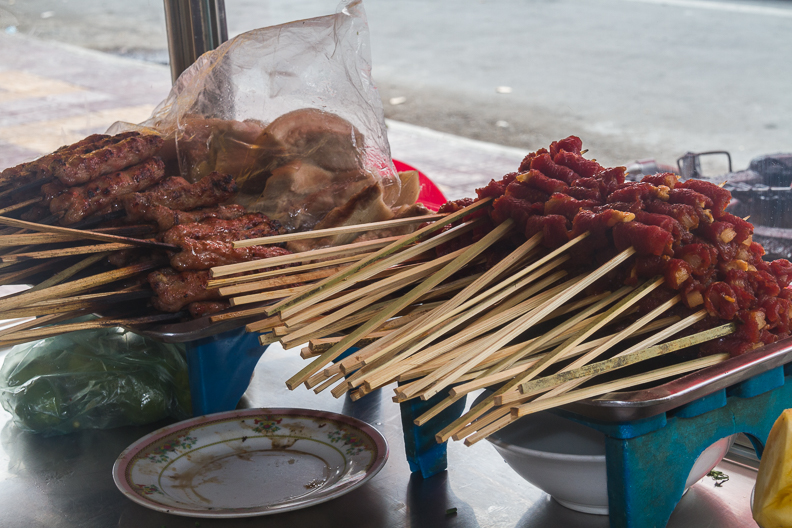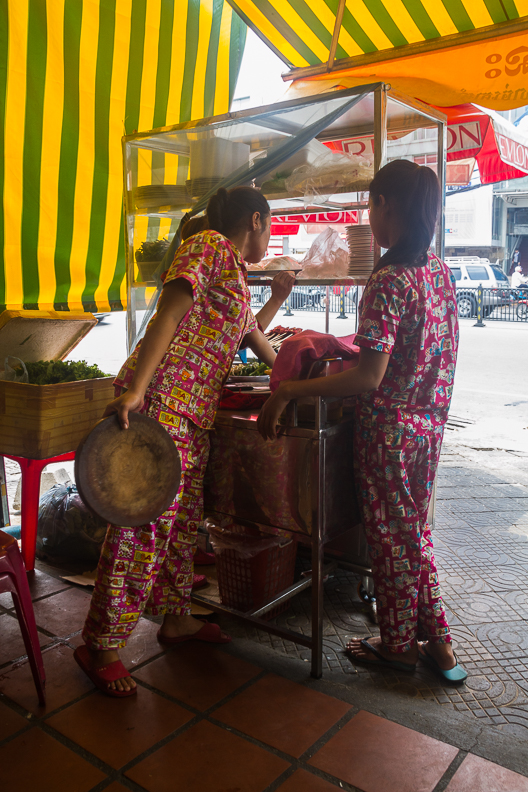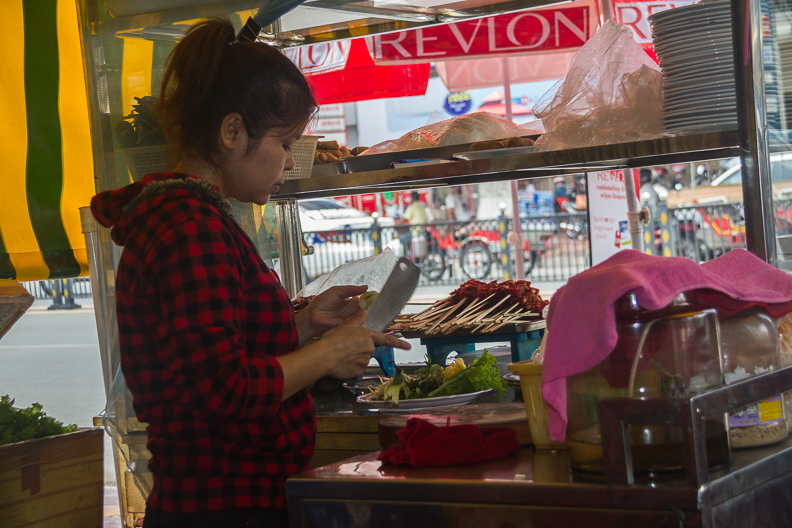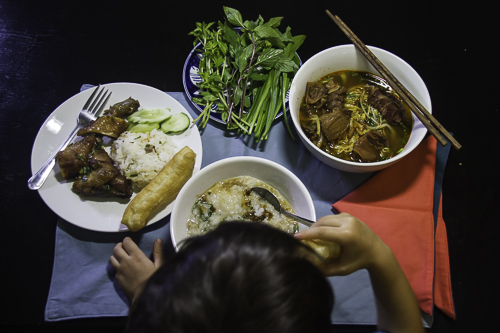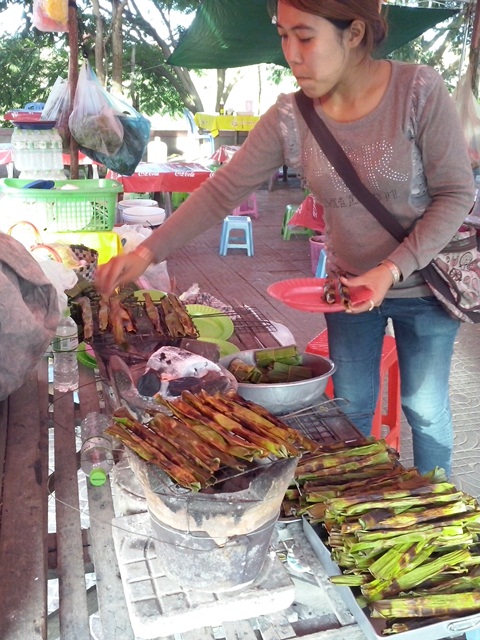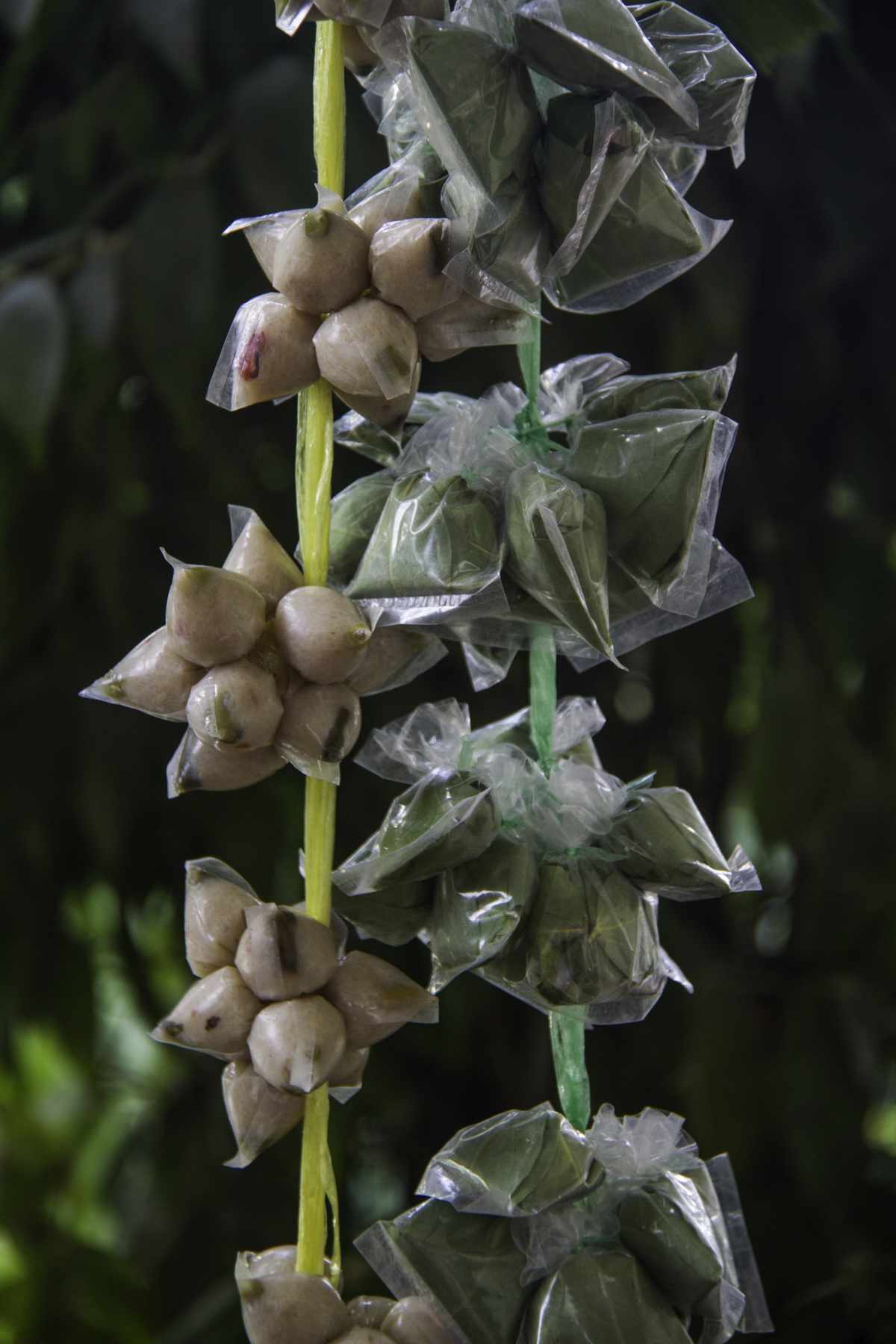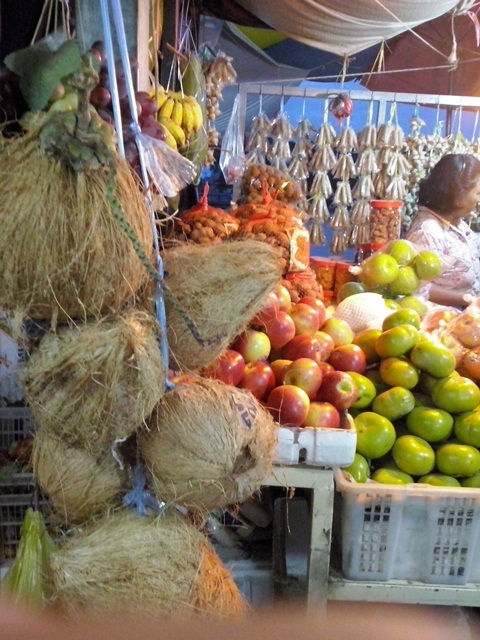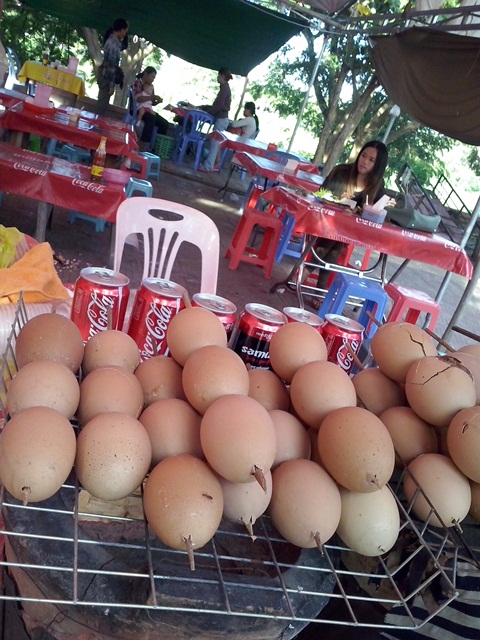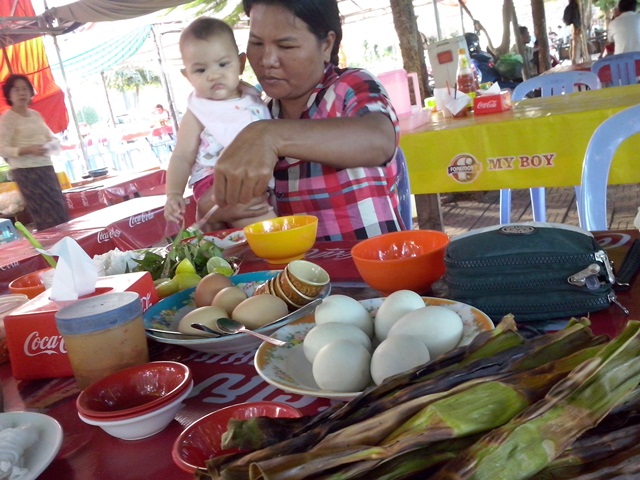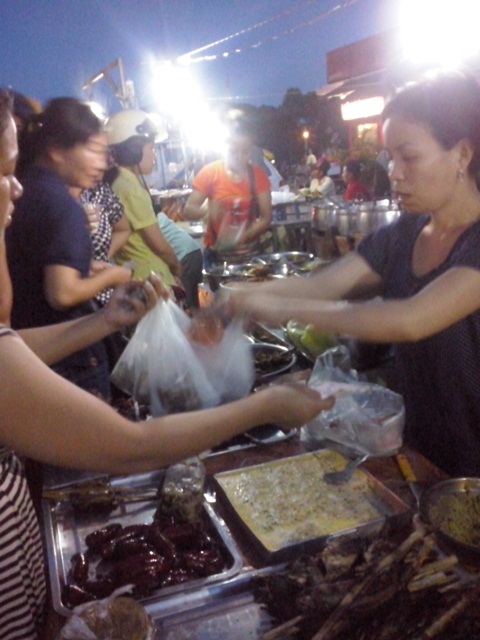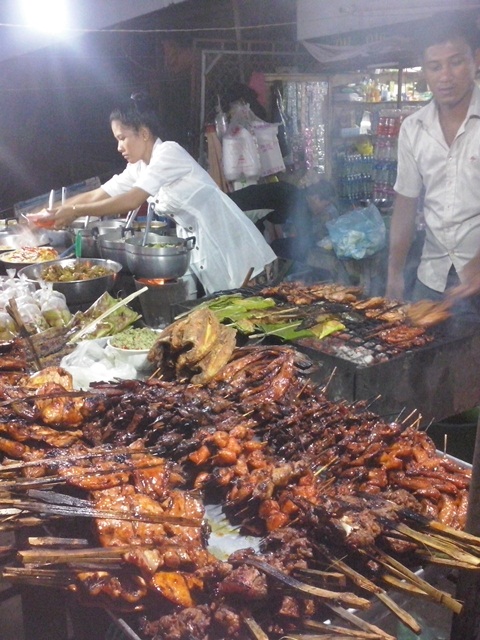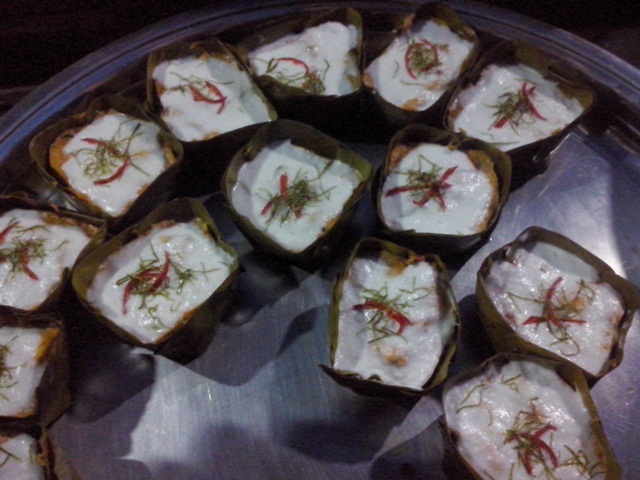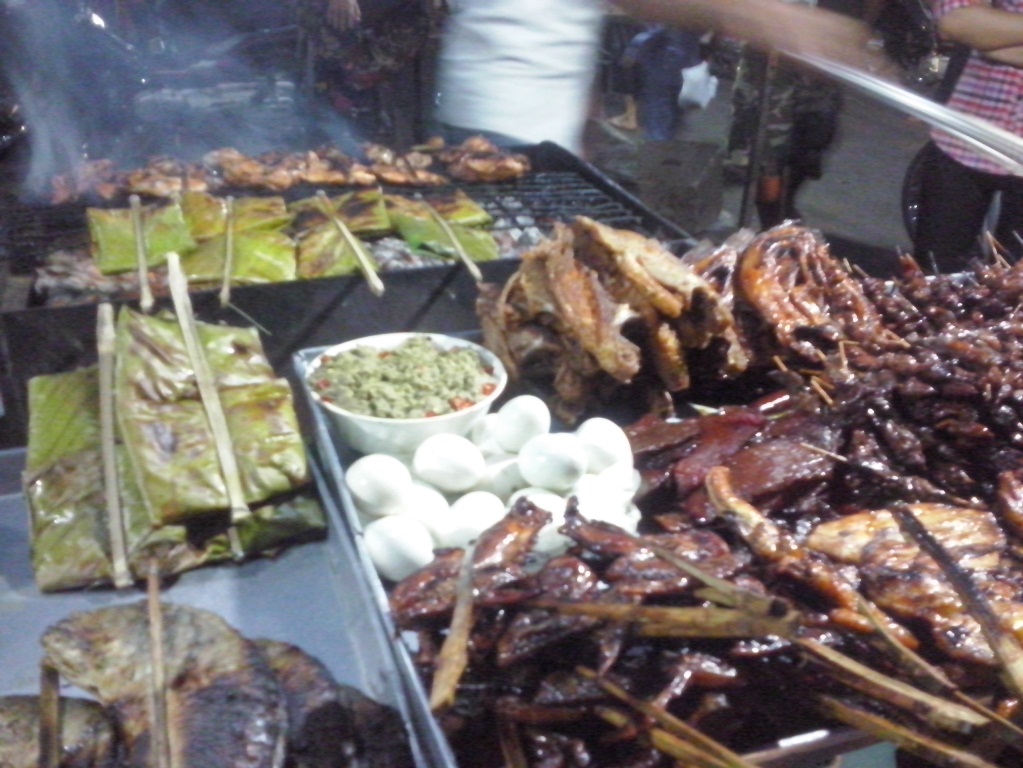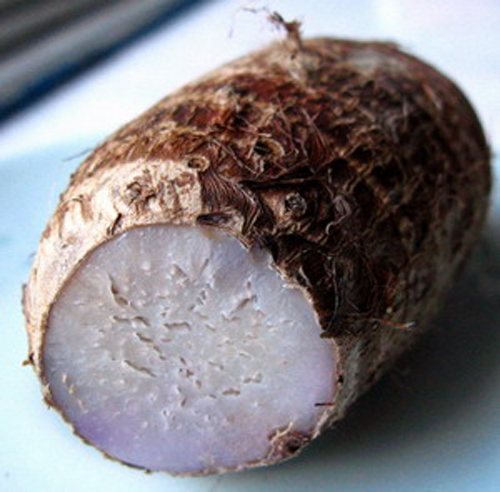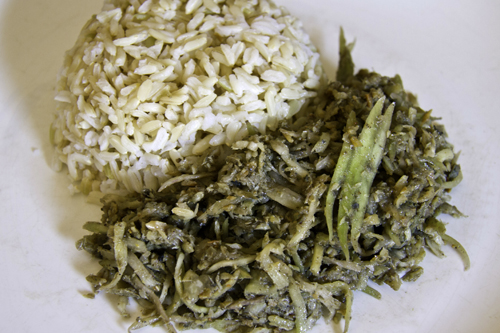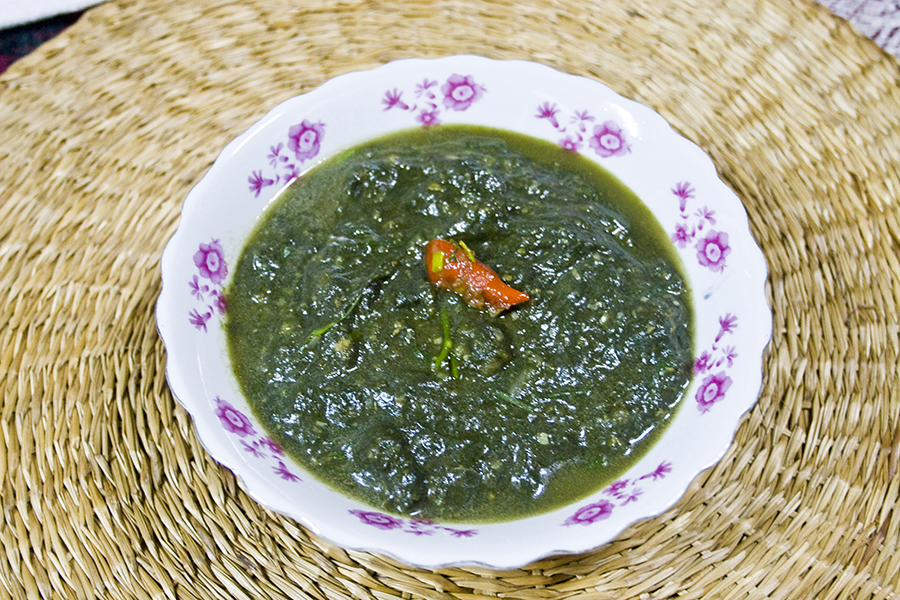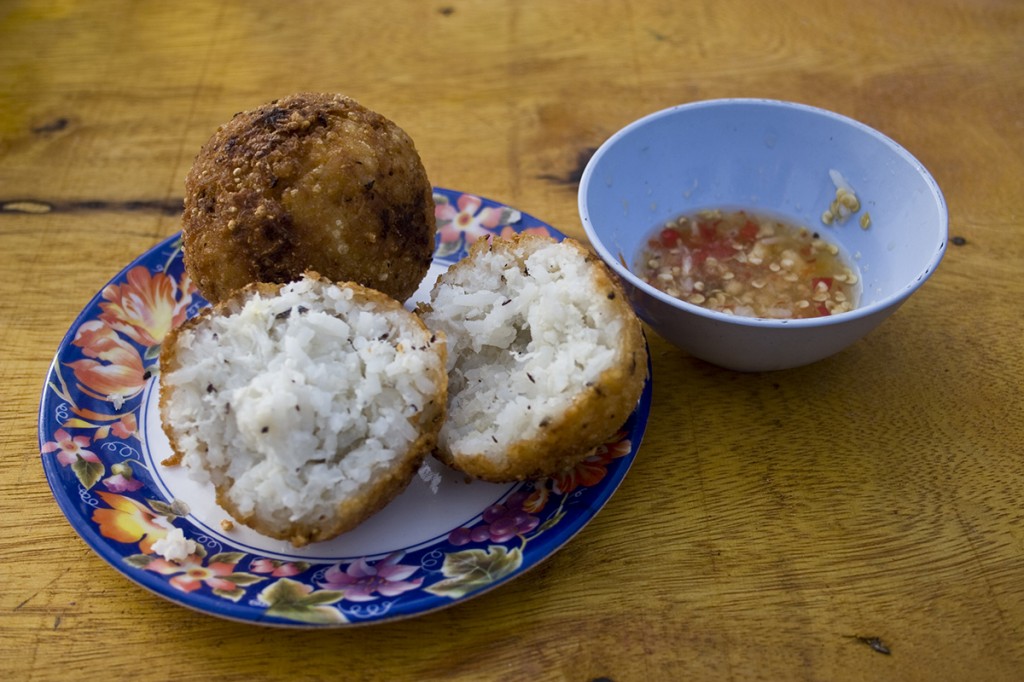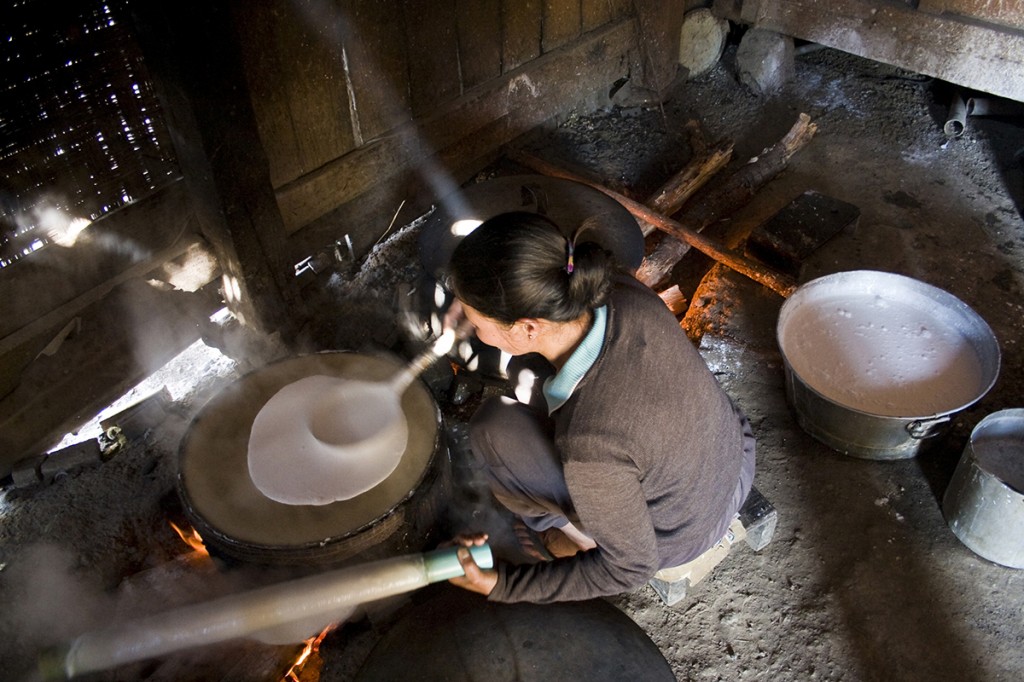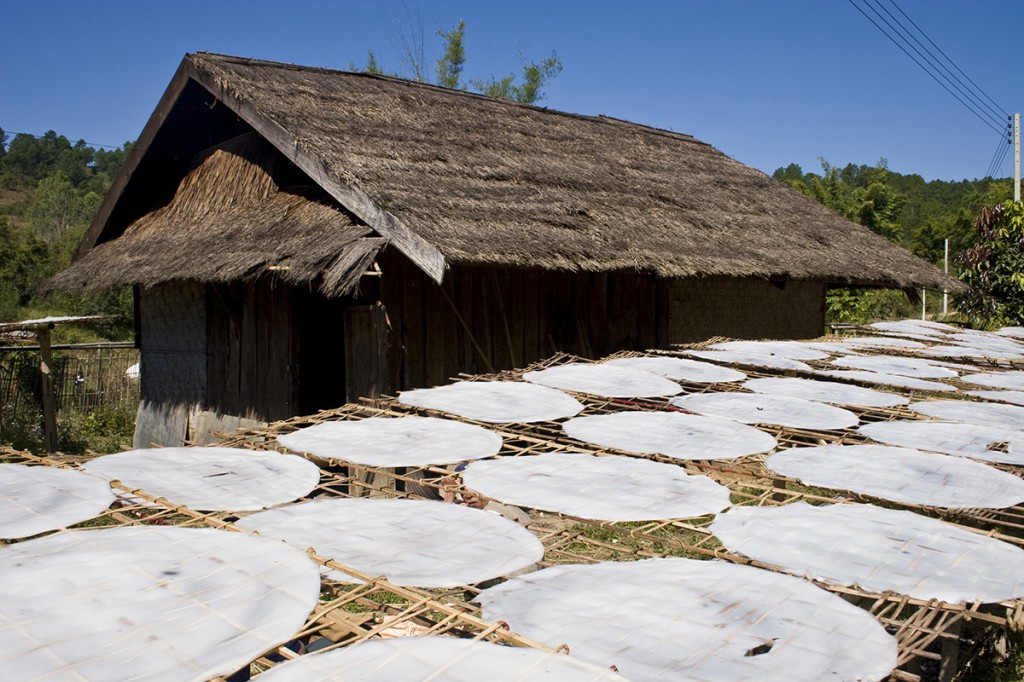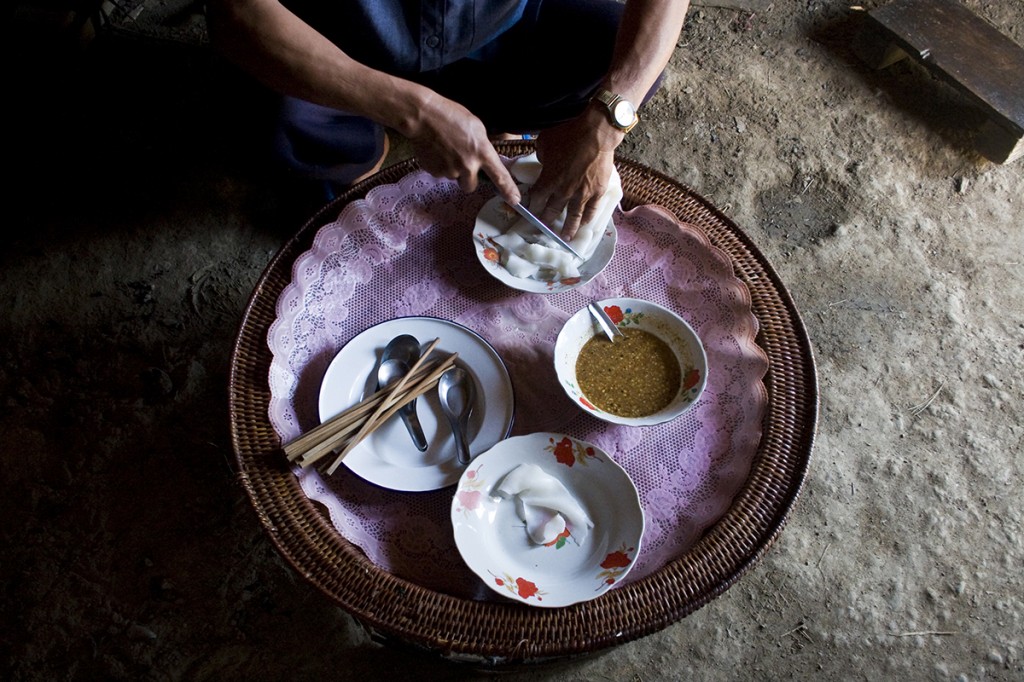This shop on busy Sihanouk Blvd has been serving fantastic bánh hỏi for years! They serve a set menu that includes sandwiches and meat skewers. It’s a picture menu, and easy to point to one of the two big platters of meats and vegetables. Before the food arrives, a small pan of water and slices of lemon is brought to the table for washing hands.
Bánh hỏi refers to the rice vermicelli noodle woven into a fine mesh, which looks like gauze. It’s paired with foods of different textures and richness – starchy green bananas, sweet pineapples, crunchy cucumbers, meats and fats – all to be wrapped into a fresh spring roll. These fillings are laid out on several platters.
One of these platters contains skewered pork meat sliced very thin and wrapped around a piece of fat. It’s accompanied by the pickled vegetables that’s served with many barbecued Khmer dishes (slivers of unripe mango or papaya, cucumber, carrot in vinegar, salt, sugar and chili).
Rice paper wrap is served dry and stacked on the plate; before rolling, a wrap is dipped in warm water to soften and make it pliable. It’s a bit tricky because once wet the wrap is fragile so it tears easily. But with a little practice it can be stretched expertly to roll an unwieldy amount of filling together. The dipping sauce, nuoc cham, is a delicate balance of spice, sweet, sour, and salty, and topped with roasted ground peanuts and chili.
Below is the process photographed step-by-step:
On Sihanouk Blvd the small “hang bai” is easily lost in the mix of salons, retailers and other eateries on the north side of the street between Monivong and St 63. It’s about 7 shops towards Monivong if starting on St 63 – look for the yellow awning with the address #83AEo St 274. Today they were sporting the famous (brightly colored) pajama apparel!
